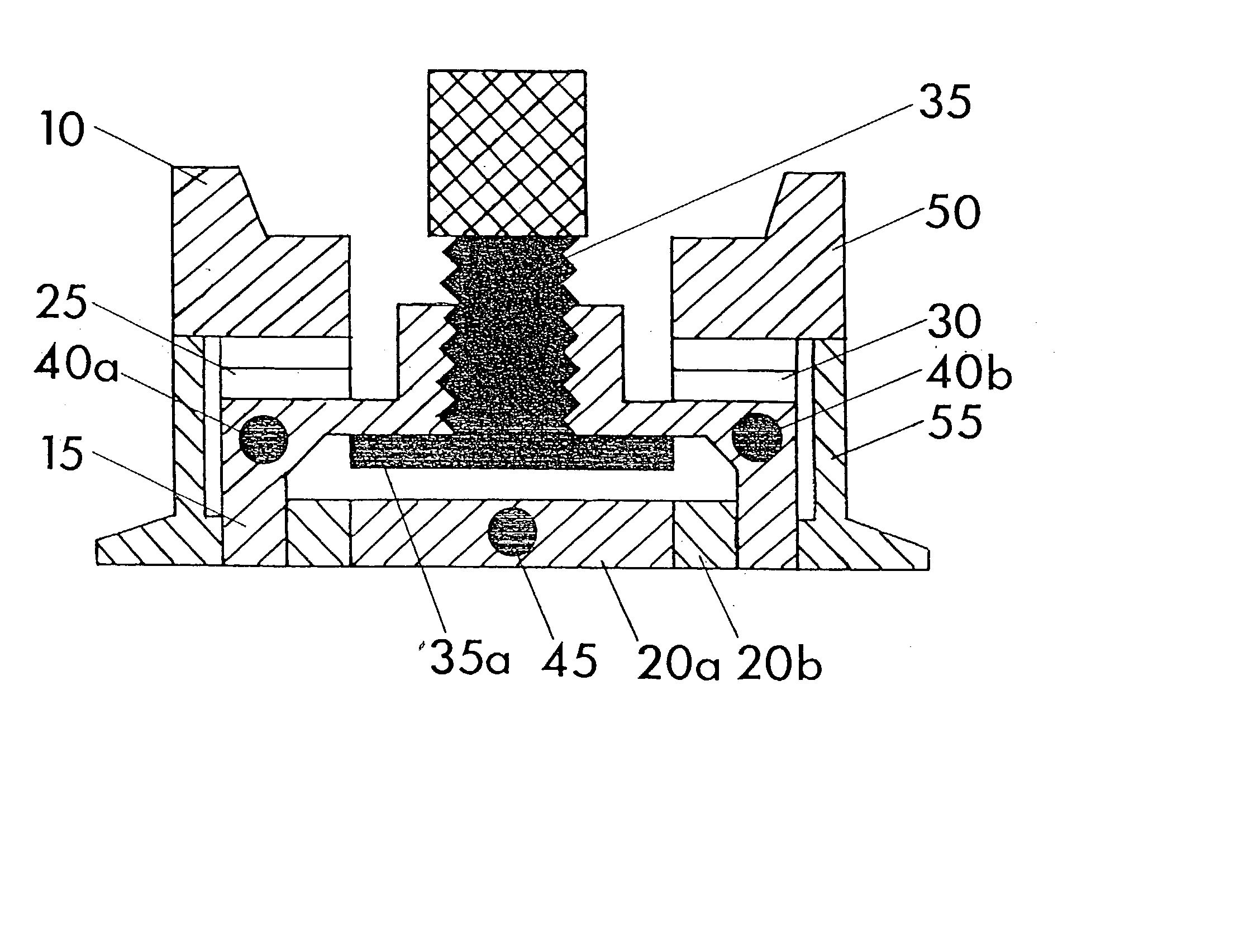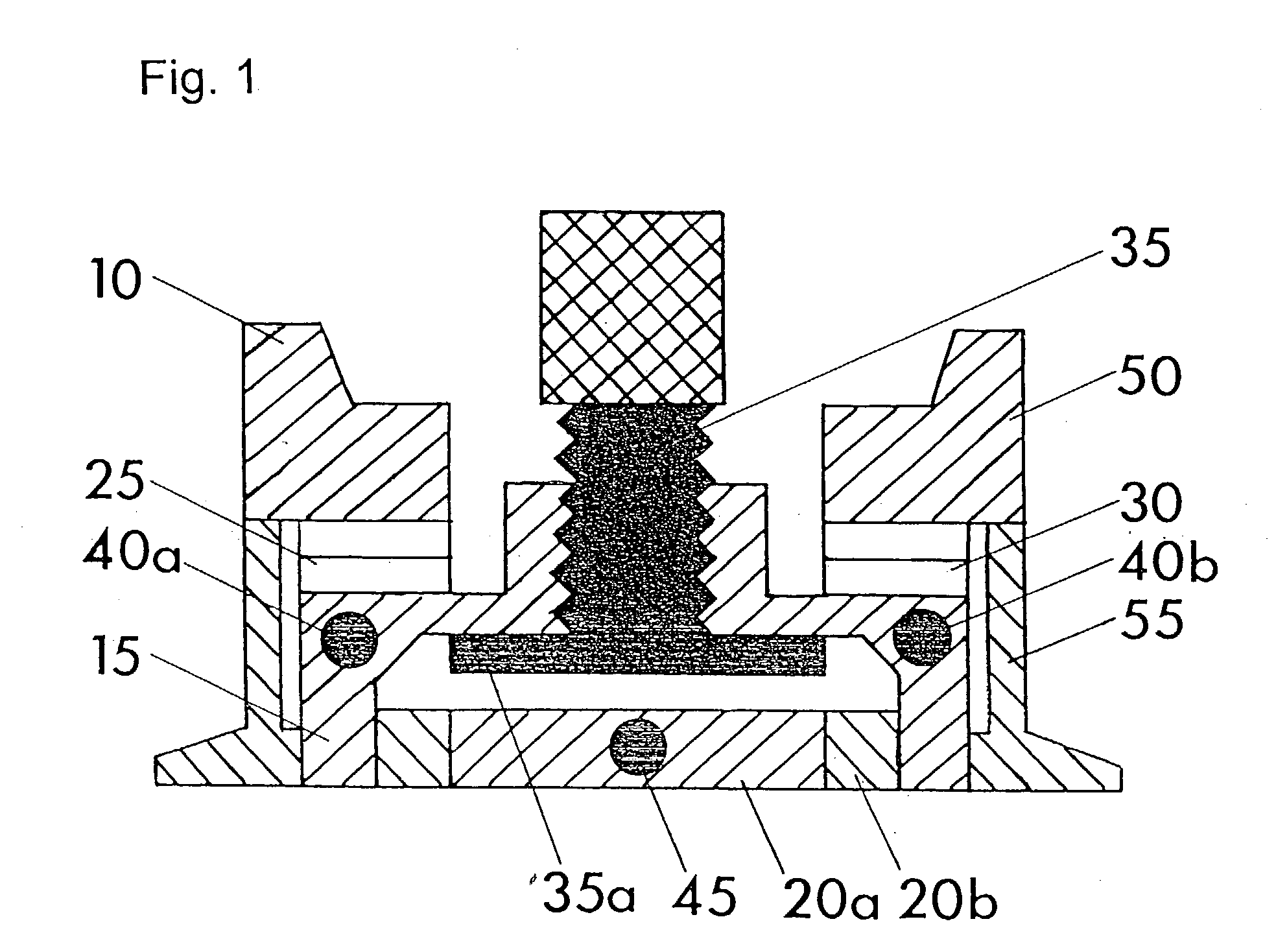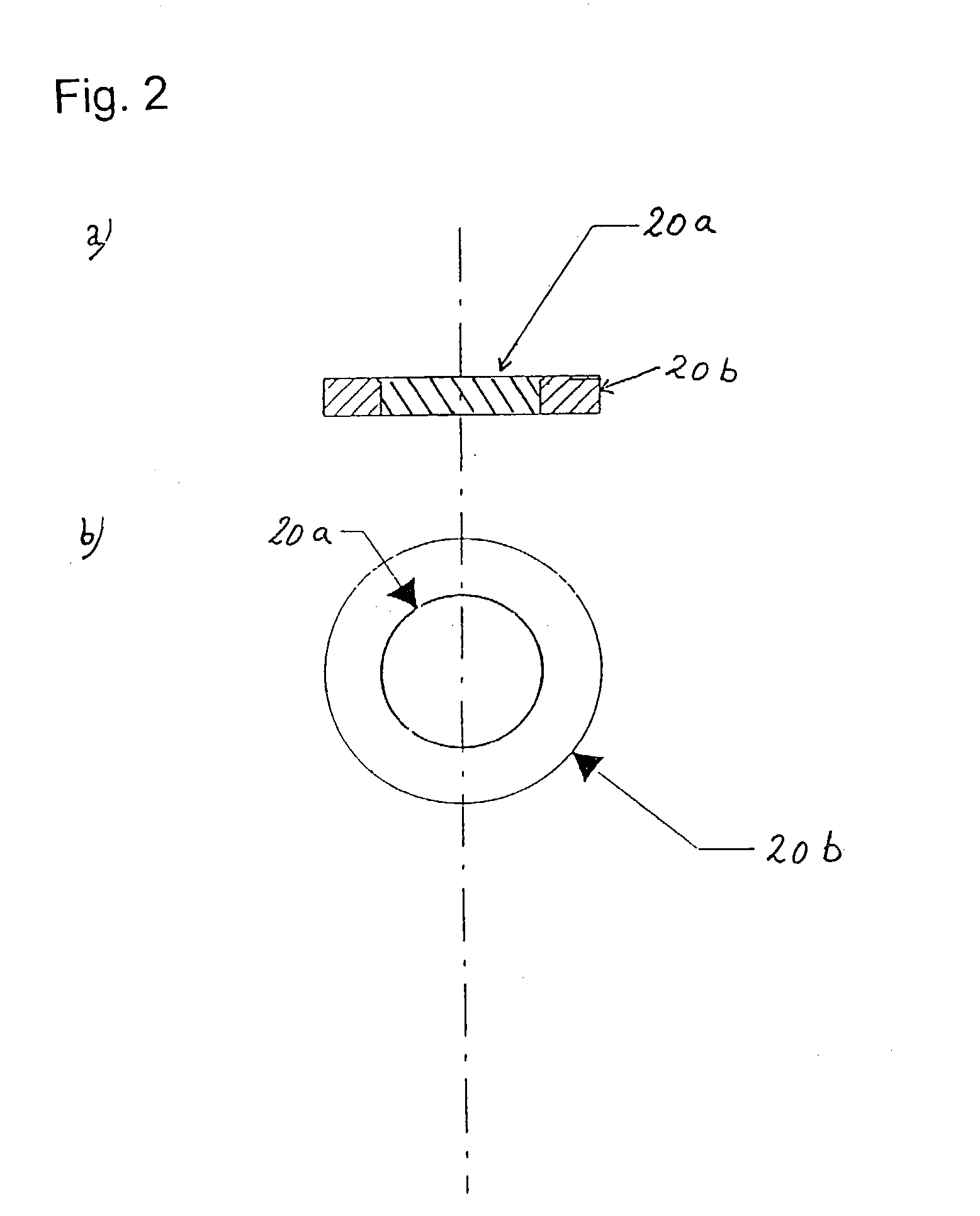Method and an apparatus for measuring flow rates
a flow rate and flow rate technology, applied in the direction of volume/mass flow by thermal effects, sensors, catheters, etc., can solve the problems of temperature dependence of the flow rate of blood, inability to estimate the deep body temperature directly, and inability to wash out heat, etc., to achieve convenient use and processing of data obtained during measuremen
- Summary
- Abstract
- Description
- Claims
- Application Information
AI Technical Summary
Benefits of technology
Problems solved by technology
Method used
Image
Examples
Embodiment Construction
[0093] Principle of the Probe:
[0094] In FIG. 1 a presently most preferred embodiment of the apparatus, the probe, according to the present invention is depicted. The probe, indicated by numeral 10, comprises a cap 15, a measuring disc 20a, two Peltier elements 25, 30 and a movable metal bridge 35. The bridge 35 has an threaded part 35a which interacts with a thread provided in the bridge so the bridge may be dislocated in vertical direction upon rotation. Two thermistors 40a and 40b are contained in the cap. 15 and one thermistor 45 is contained in the measuring disc 20a.
[0095] In the presently most preferred embodiment of the apparatus according to the present invention two Peltier elements, 25 and 30, are placed in the cap 15 and are being used as heating and cooling elements. The function of the cap is to heat or cool both the measuring disc containing the thermistor 45 and the cutaneous tissue in contact with the probe. Furthermore the cap 15 has to remove surplus of heat or coo...
PUM
 Login to View More
Login to View More Abstract
Description
Claims
Application Information
 Login to View More
Login to View More - R&D
- Intellectual Property
- Life Sciences
- Materials
- Tech Scout
- Unparalleled Data Quality
- Higher Quality Content
- 60% Fewer Hallucinations
Browse by: Latest US Patents, China's latest patents, Technical Efficacy Thesaurus, Application Domain, Technology Topic, Popular Technical Reports.
© 2025 PatSnap. All rights reserved.Legal|Privacy policy|Modern Slavery Act Transparency Statement|Sitemap|About US| Contact US: help@patsnap.com



